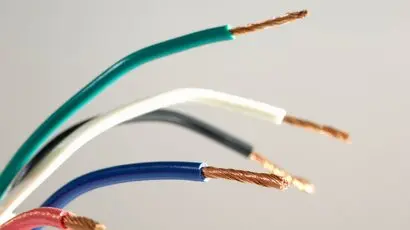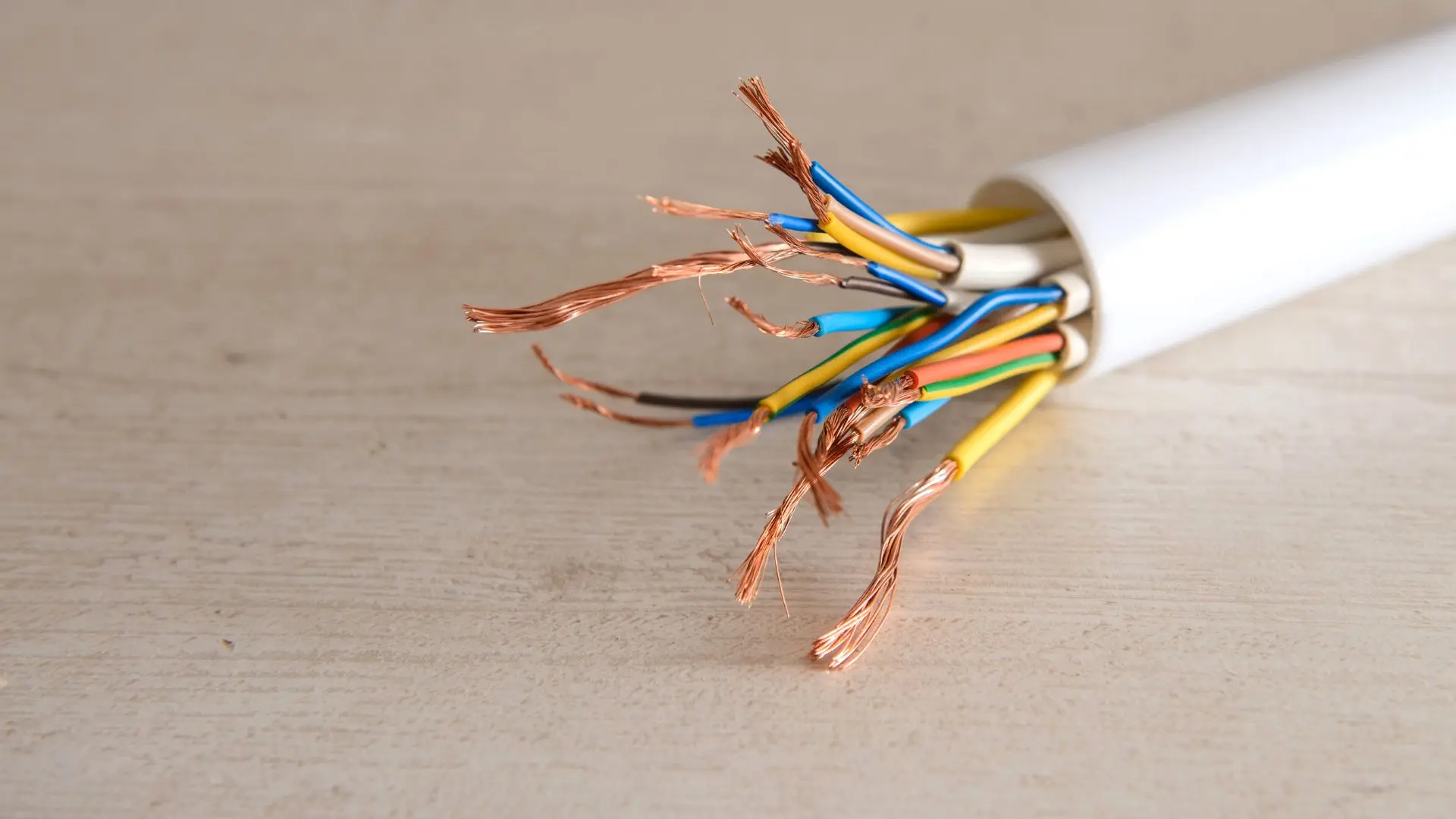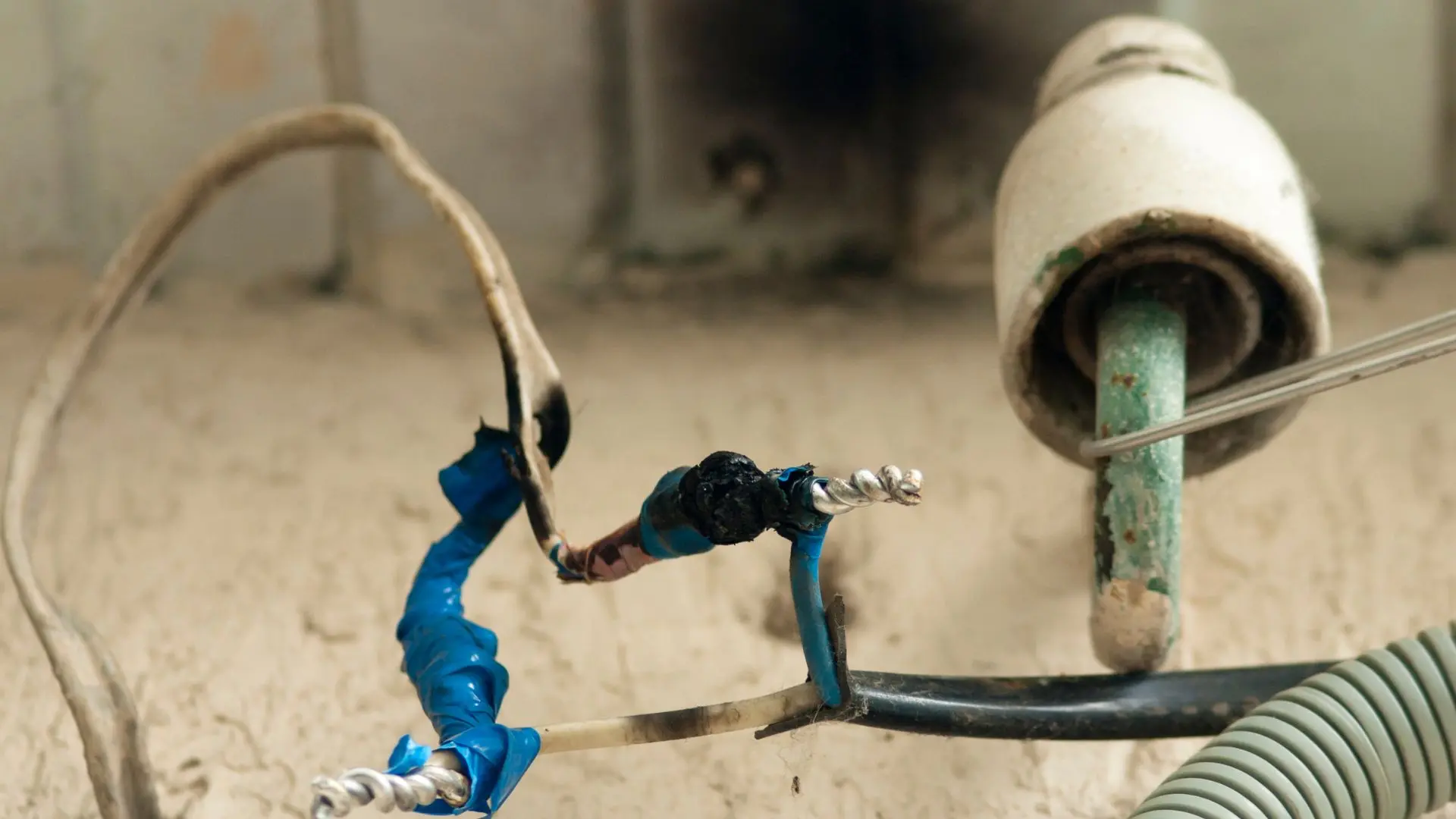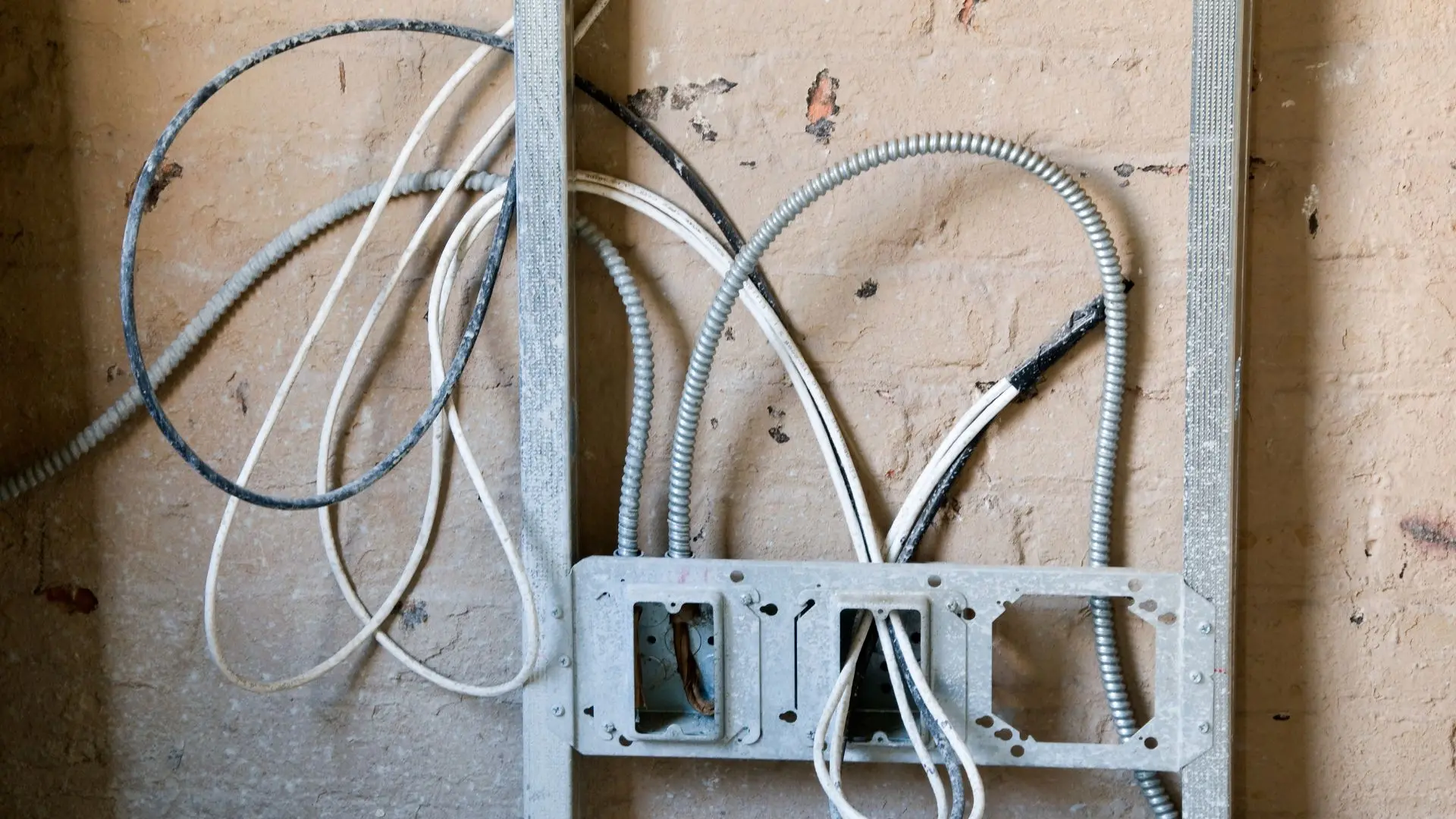
Get your free Melbourne Electrician quote today!
Our team of Melbourne Electricians is here to help you with any questions or concerns you may have. We’re committed to providing you with the best possible service and support.
Age, usage, and material all play a role in how safely your home’s wiring performs over time. This guide breaks down what affects wiring lifespan, warning signs it’s time for a check-up, and what you should avoid doing when dealing with older electrical systems.
More than 40% of house fires in Australia are caused by electrical faults , many of which stem from outdated wiring. It’s a sobering statistic, especially when most of us have no idea what’s hidden behind the walls.
Because electrical wiring is invisible day to day, it’s easy to forget it even exists. Yet, it’s working nonstop to power lights, appliances, and everything in between. Out of sight shouldn’t mean out of mind, especially when the stakes are so high.
This guide takes a closer look at how long house wiring really lasts, what affects its lifespan, and when it’s time to call a qualified electrician.
What’s Inside Your Walls? A Quick Look at Wiring Types
Wiring isn’t all the same, and what’s inside your walls often depends on when your property was built. One of the most common modern types is TPS (Thermoplastic Sheathed) wiring . Found in newer homes, it features plastic insulation around copper wires and is properly grounded to meet current safety standards .
Then there’s VIR Vulcanised Indian Rubber, an older type used up until the 1960s. VIR wiring has rubber insulation and was never designed for today’s electrical demands . You’ll often find it in very old properties, especially those that haven’t been rewired.

Some homes also still contain cotton-sheathed wiring, sometimes with no earthing at all. This style lacks the safety measures modern systems rely on, like RCDs and upgraded circuit breakers . The insulation on this wiring can become brittle over time, making it a fire hazard.
Understanding your wiring type matters. It influences your risk for electrical fires, impacts safety, and helps identify when a replacement or repair might be overdue.
The Expected Lifespan of Electrical Wiring
The short answer: it depends. But here’s a general guide for how long different types of electrical wiring usually last:
- TPS Wiring : 40 to 70 years. Because it’s made with plastic insulation and copper conductors, it’s durable and suited for modern circuits and appliances.
- VIR Wiring : 25 to 40 years. The rubber insulation deteriorates with age, heat, and environmental conditions like humidity.
- Aluminium Wiring : 25 to 30 years. Often found in homes built in the 1960s and 70s, aluminium wiring is more prone to loose connections and excessive heat.
Of course, actual lifespan varies. Environmental conditions like moisture in walls, UV light exposure, and rodent damage can cause premature wear. So can overloaded circuits, excessive heat, or poor installation.
Take, for example, a 1950s home still running on cloth-sheathed wiring. The insulation was so brittle that it crumbled during a routine inspection. That’s not just a warning sign—it’s a recipe for fire damage.
Proper installation also plays a role. Wiring that’s not correctly routed, shielded, or properly grounded can deteriorate faster, especially in homes that have undergone multiple renovations over the decades.
What Shortens Wiring Lifespan?
Several internal and external factors can shorten the lifespan of your house wiring. One major culprit is moisture damp walls can compromise insulation and increase the risk of short circuits . Add in humid climates, and you’ve got a breeding ground for electrical faults .
Rodent damage is another real threat . Mice and rats chew through cables, exposing wires and putting the entire electrical system at risk of shorts or fire.

Poor installation is a huge factor too. DIY electrical work might save a few dollars upfront, but it can lead to exposed cables, loose connections, and circuits that aren’t properly fused or protected by circuit breakers.
Then there’s the issue of overloaded circuits. Modern households use far more electricity than in decades past. Air conditioners, TVs, computers, and other high-demand appliances place heavy stress on wiring that wasn’t designed for this load.
Even UV light from sunlight hitting exposed wiring in roof cavities can cause insulation to break down prematurely.
Signs Your Old Wiring Might Be Outdated
Old or deteriorating wiring doesn’t wave a red flag, but it does drop hints. Recognising the signs early can help prevent serious electrical issues or even fires.
Flickering Lights and Power Surges
If your lights flicker when you switch on appliances or multiple devices, it could mean your circuits are overloaded or suffering from loose connections . This is especially common in homes where the original house wiring hasn’t been updated in decades.
Strange Smells and Discolouration
That faint burning smell near switches or outlets isn’t something to ignore. It often points to melting insulation , which can lead to fire damage. Discoloured outlets, scorch marks, or warm wall plates are all subtle but serious warning signs.
Unusual Noises
Buzzing sounds from outlets, switches, or the consumer unit could mean arcing electricity. This happens when electricity jumps gaps in loose connections, often sparking small fires inside your walls.
Breakers Tripping Too Often
[Tripping circuit breakers](https://wpelectricians.com.au/blog/circuit-breaker-tripping) or frequently tripped breakers aren’t just annoying—they’re a signal that something deeper is wrong. Resetting them over and over won’t fix the issue and might mask a wiring fault.
Don’t just flip the breaker and hope for the best. In most cases, it’s a sign your electrical system needs a thorough inspection.
Other Telltale Issues
Keep an eye out for frequent tripping, exposed wires, or outdated porcelain fuses still in use instead of modern circuit breakers. These are all signs that your electrics are behind the times and likely due for an upgrade.
Identifying these signs early means you can call a qualified electrician before a small issue becomes a big problem.
Rewiring Your Home: When It Makes Sense
Absolutely. Replacing outdated wiring can prevent fire damage, improve electrical safety, and make your home more energy-efficient. It’s also a smart move for anyone renovating , upgrading appliances, or planning to sell.

New wiring means a safer electrical system, fewer tripping circuit breakers, and upgraded circuit breakers or RCDs to protect every part of your home. A professional electrician can ensure all connections are tight, everything is properly grounded, and all switches and outlets are up to current standards.
Rewiring can also cut long-term costs by improving efficiency and avoiding emergency repairs. In many cases, insurance providers even offer lower premiums for homes that have updated their house wiring.
A rewired property is also more attractive to buyers, especially when the electrics meet current Australian safety regulations. It just makes sense.
How Often Should You Inspect Your Wiring?
For most homes, a qualified electrician should perform regular inspections every 10 years. Rental properties require checks every 5 years under Australian standards .
Older homes, especially those with VIR, cotton-sheathed, or aluminium wiring, should be prioritised for earlier checks. A thorough inspection during a renovation or before buying a property can reveal hidden issues.
Pre-purchase inspections help buyers understand what wiring needs replacing and avoid surprise repair bills later.
Wiring Needs: Hiring a Professional vs DIY
Rewiring isn’t a DIY job. Only a licensed professional electrician should handle such complex and dangerous work. There are major risks involved in getting it wrong, such as fire, electrocution, or even voided insurance if the job isn’t done to code or doesn’t meet Australian safety standards.
A qualified electrician brings more than tools and equipment they bring peace of mind. They will not only replace your wiring but also upgrade consumer units, install reliable circuit breakers, and ensure every outlet, plug, and switch is correctly earthed and properly grounded. They’ll check for loose connections, test the circuits, and use safe, compliant materials suited for your specific electrical system and property layout.
DIY work might seem cheaper, but it rarely ends that way. In most cases, poor installation leads to frequent tripping, unsafe connections, and sometimes even fire damage. It can also delay necessary repairs and create more complex wiring needs later on.
When it comes to your home’s safety, it’s not worth cutting corners. Leave the job to a pro it makes sense.
Don’t Let Age Catch You Off Guard
Most people don’t think about their home’s electrical wiring until something goes wrong. But by then, it might be too late, and the damage could already be done.
If your property is more than 30 years old or you’re noticing signs such as buzzing sounds, frequent tripping, or flickering lights, don’t wait. These issues could point to old wiring or an overloaded electrical system.
A professional electrician should inspect your system to determine your wiring needs. This means checking the consumer unit, running safety tests, and confirming if a replacement or repair is necessary.
A quick inspection today can prevent a costly fix tomorrow . It’s all about spotting potential faults early before they become dangerous. For trusted house wiring inspections, reach out to WP Electrical today .
Published by: Pascal Harb17 October 2025